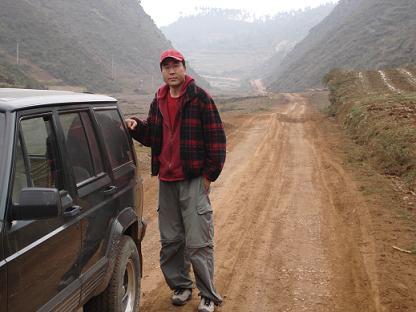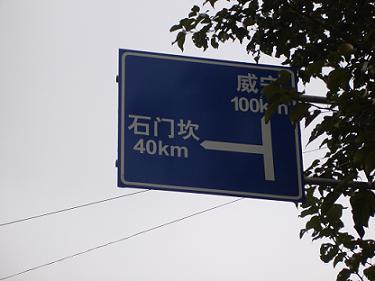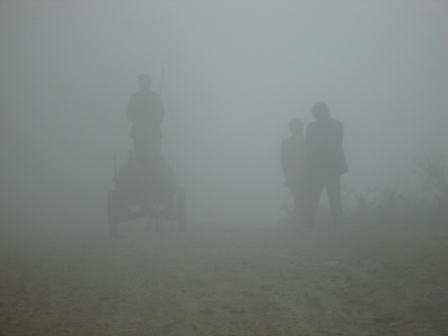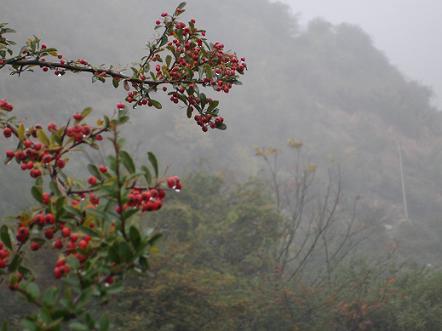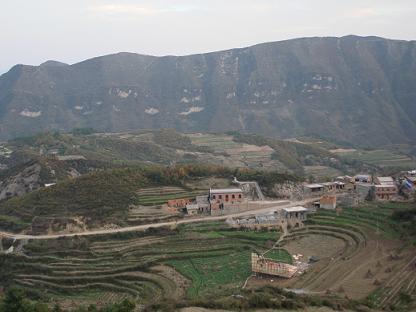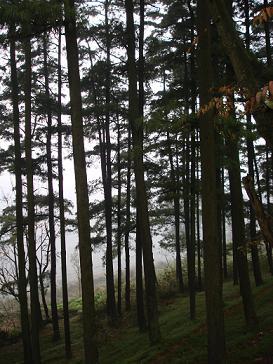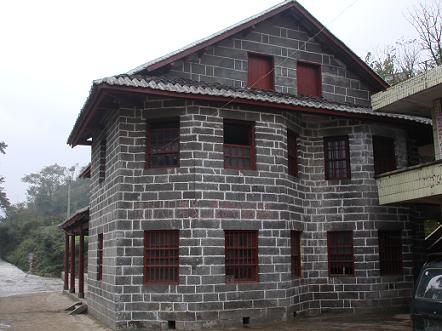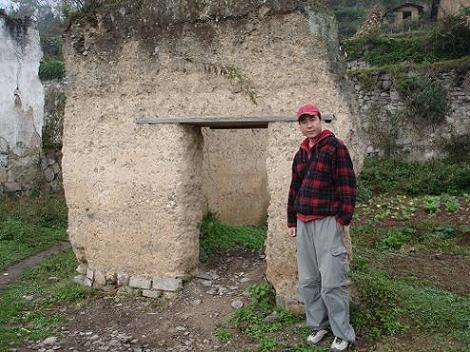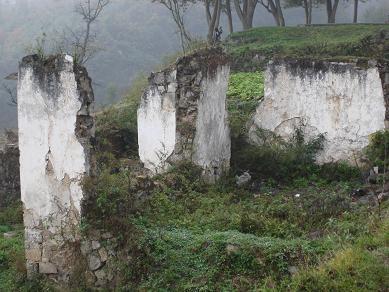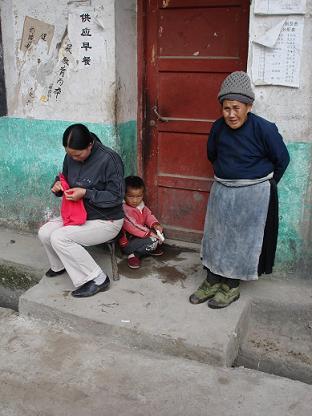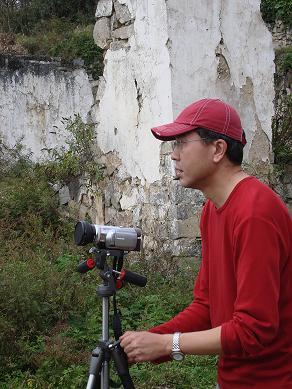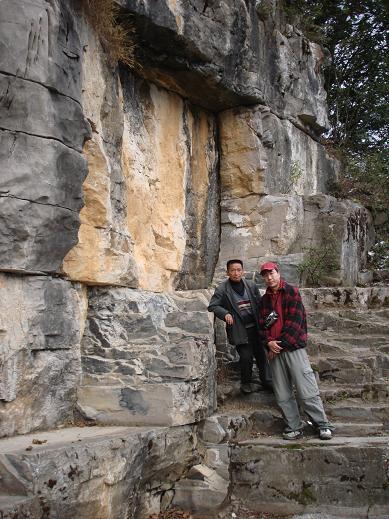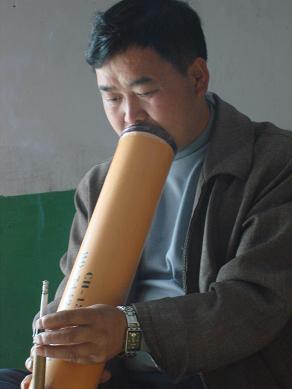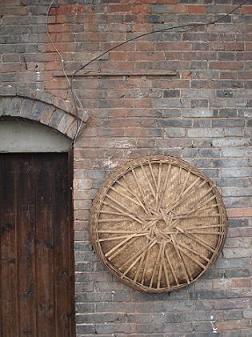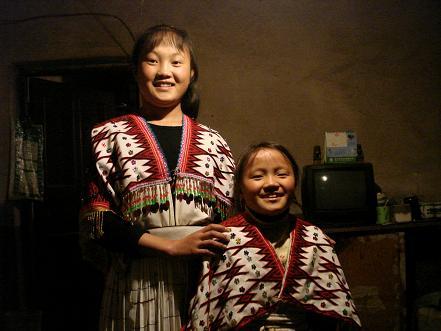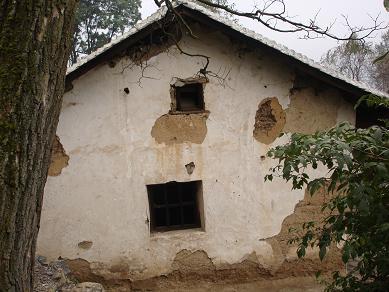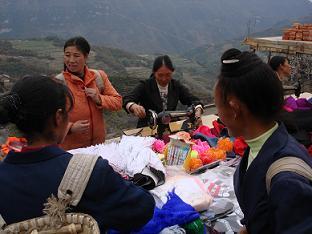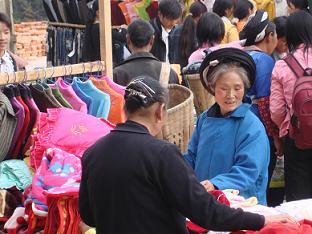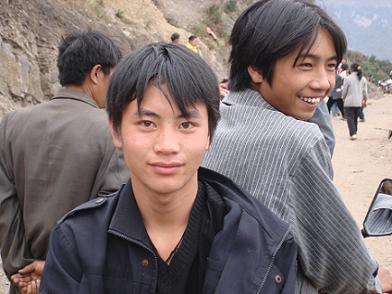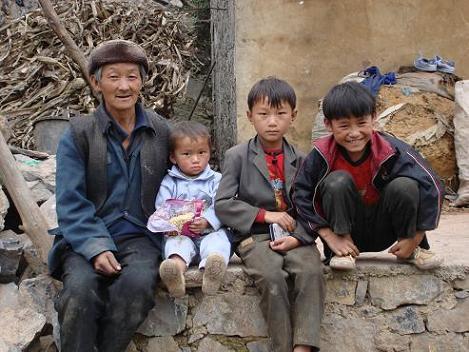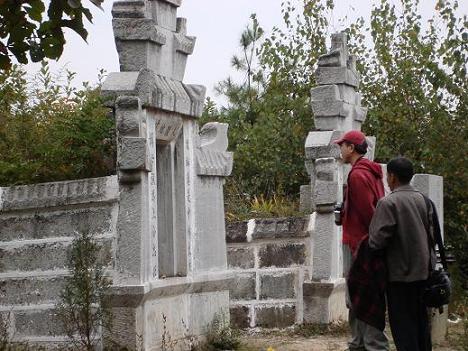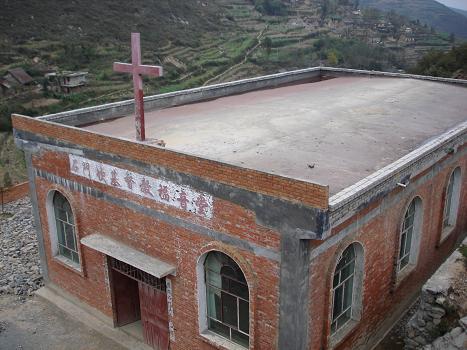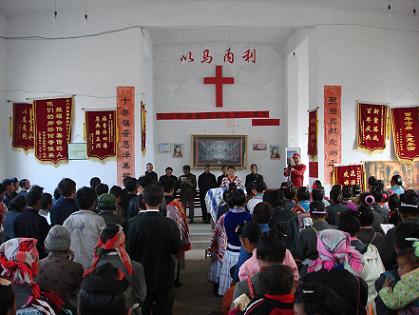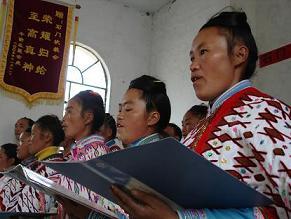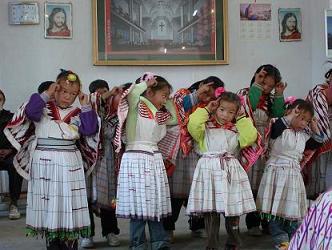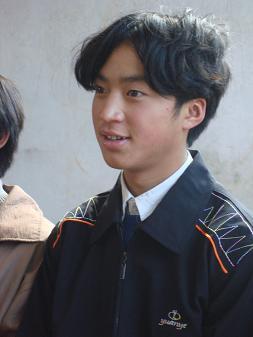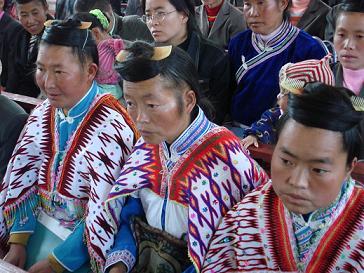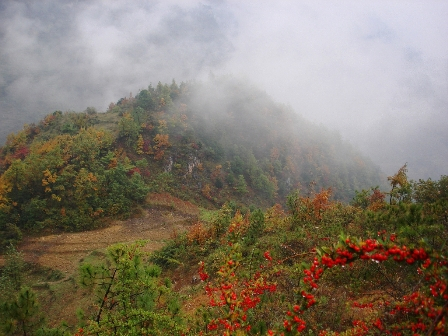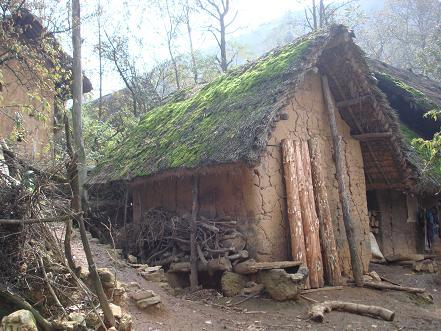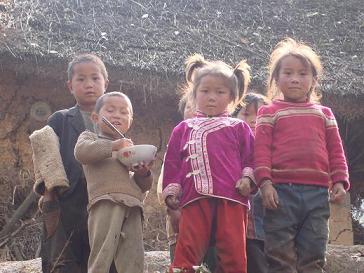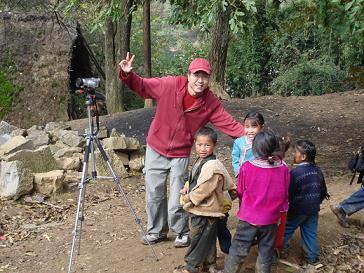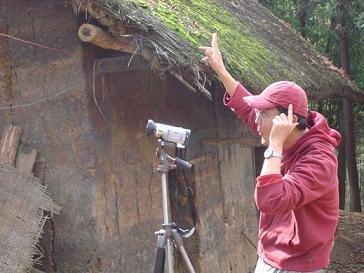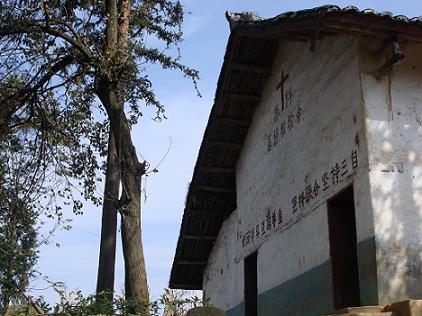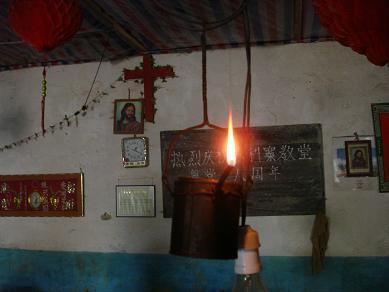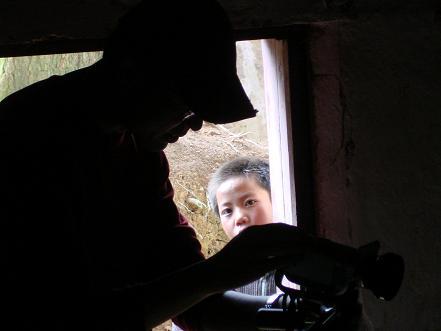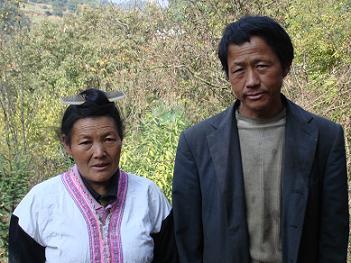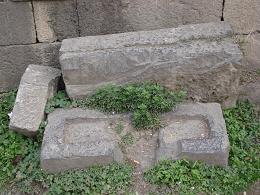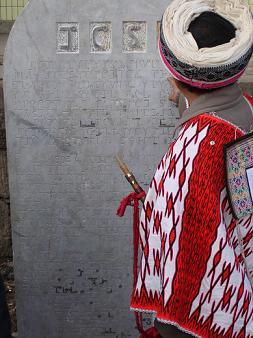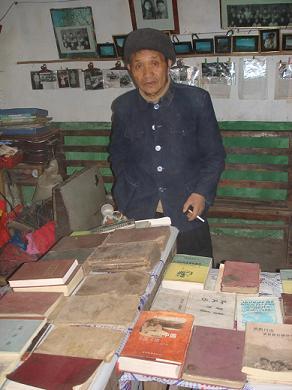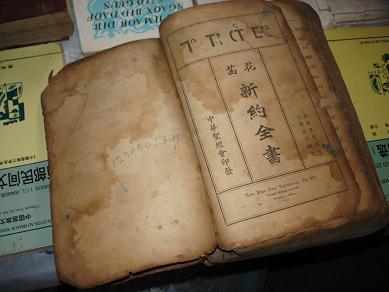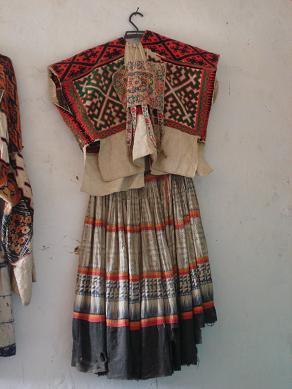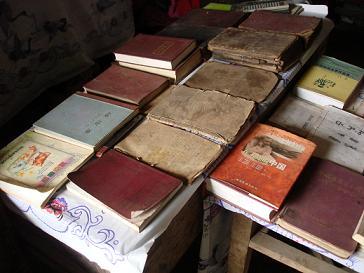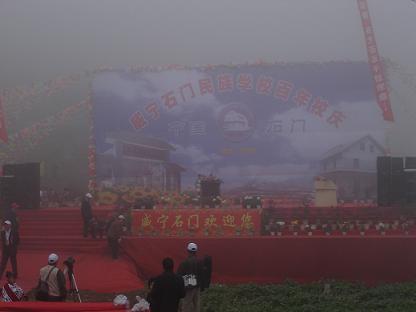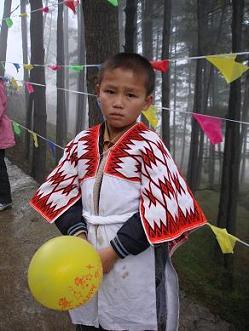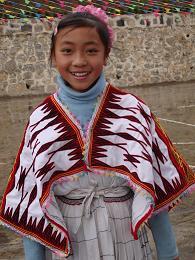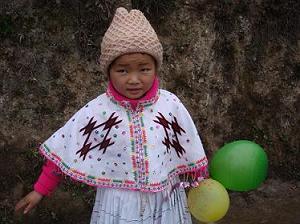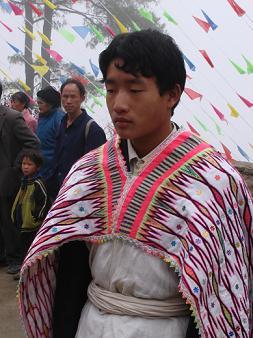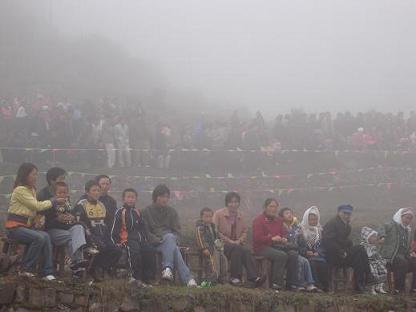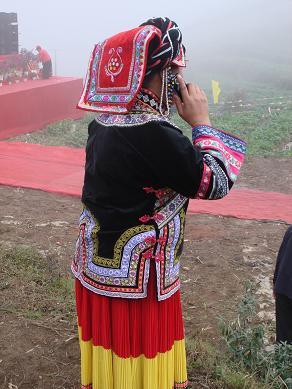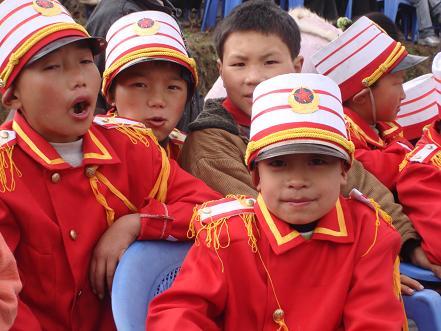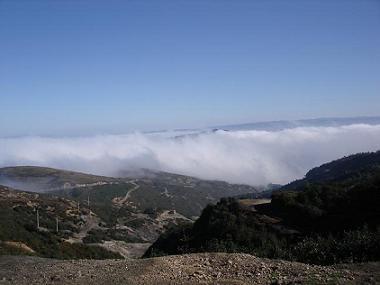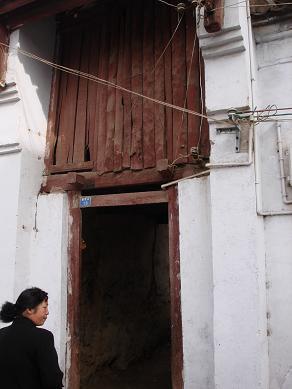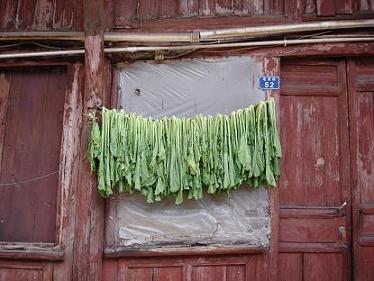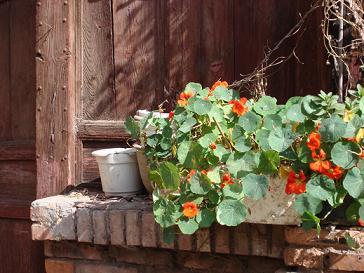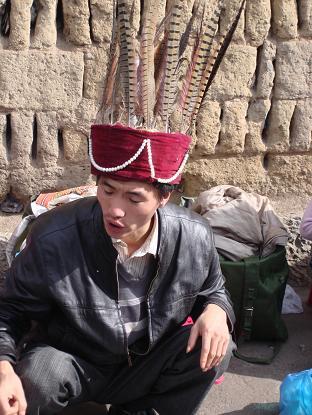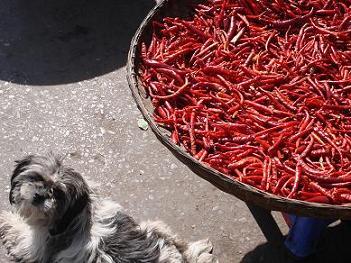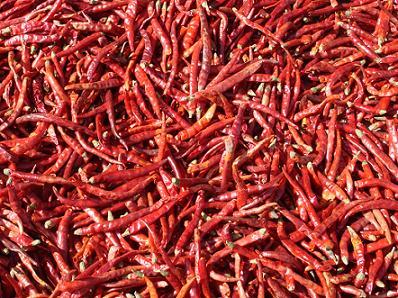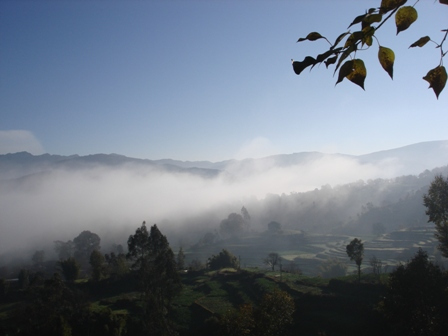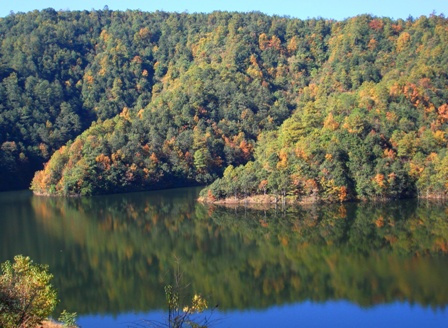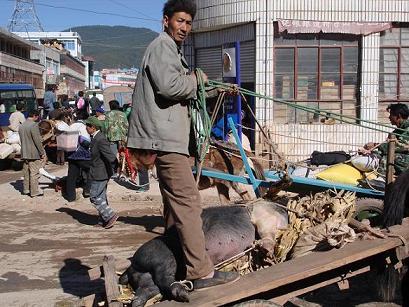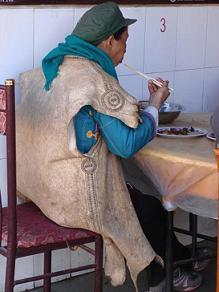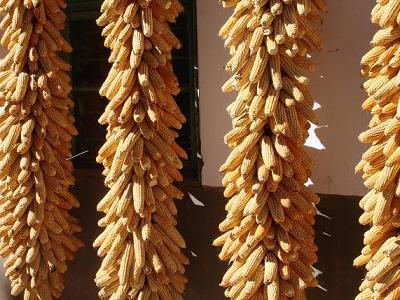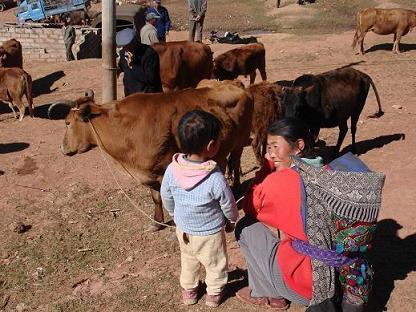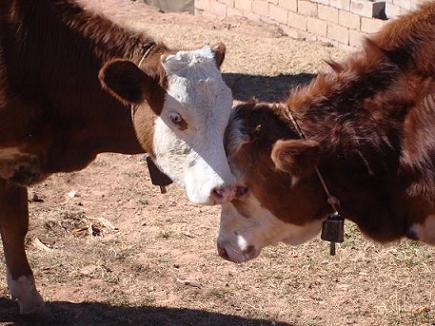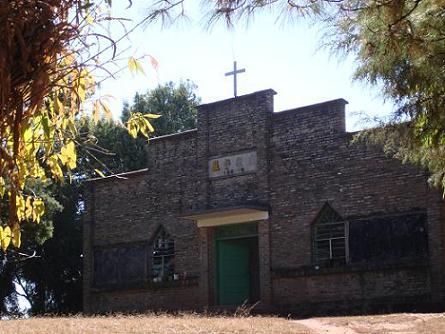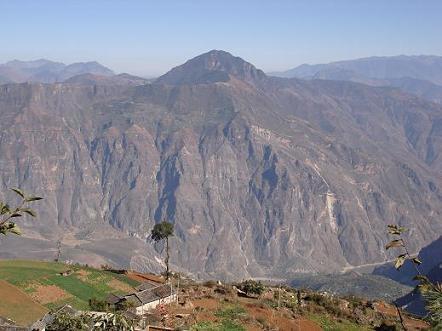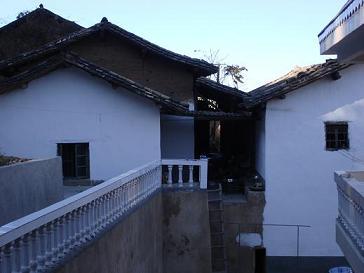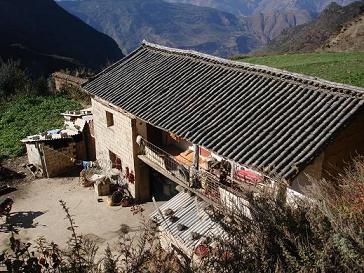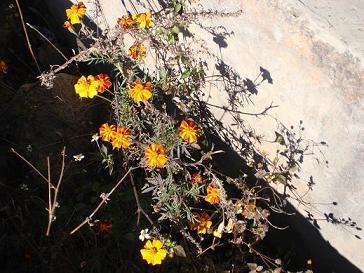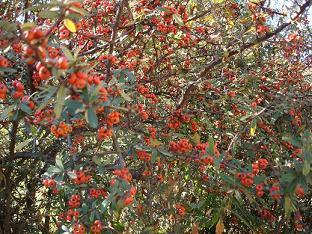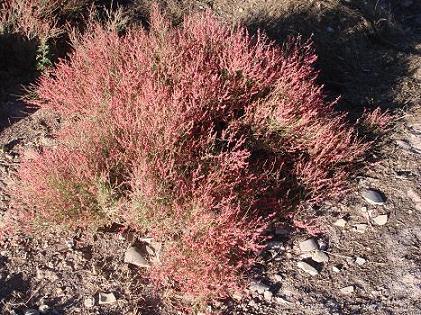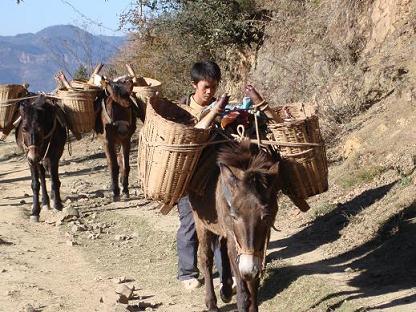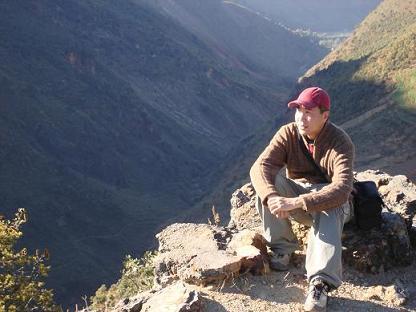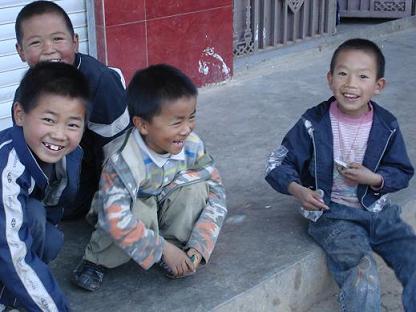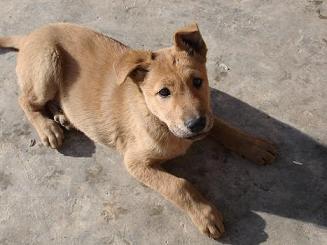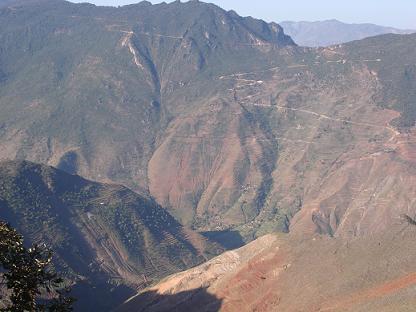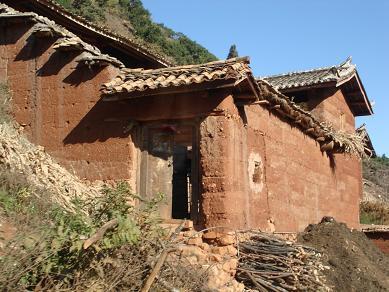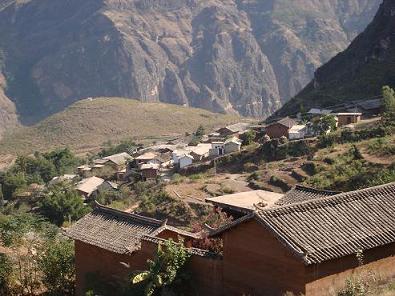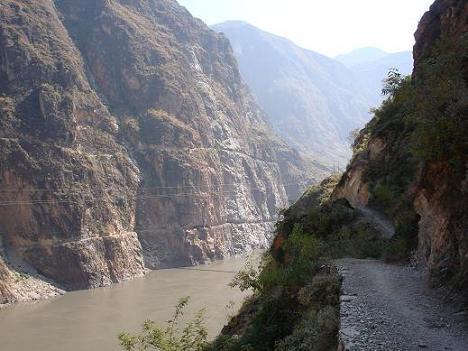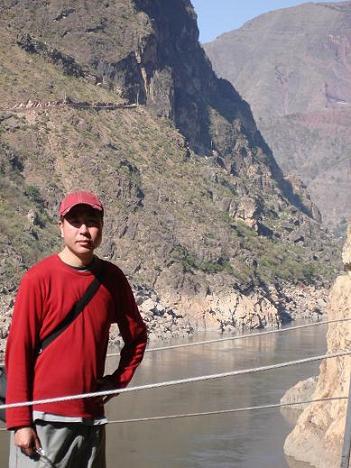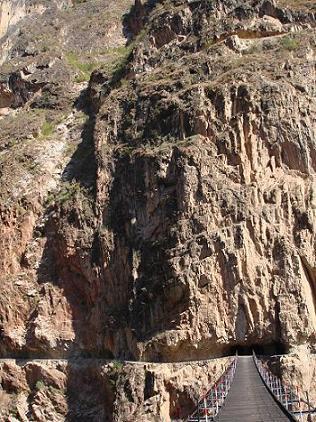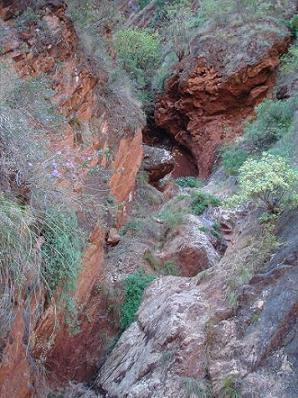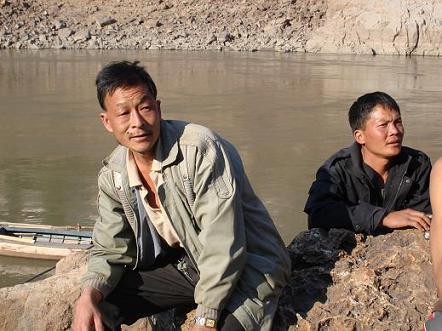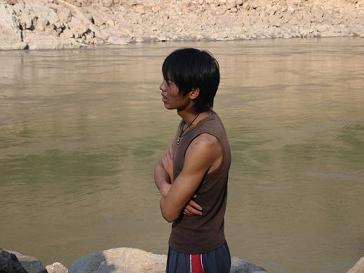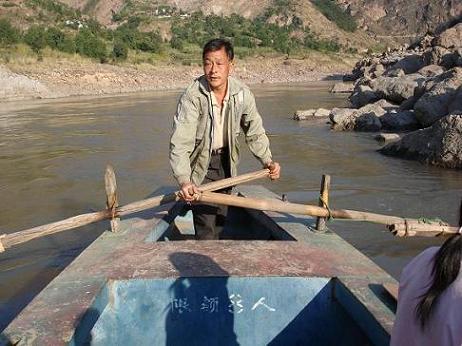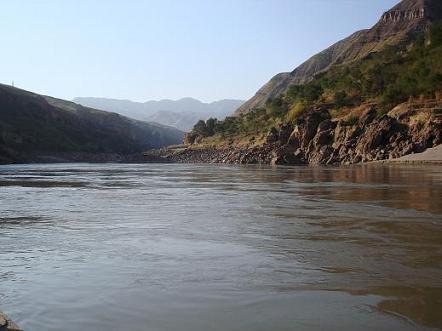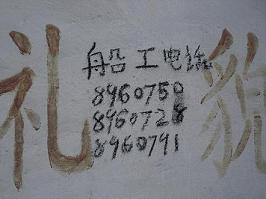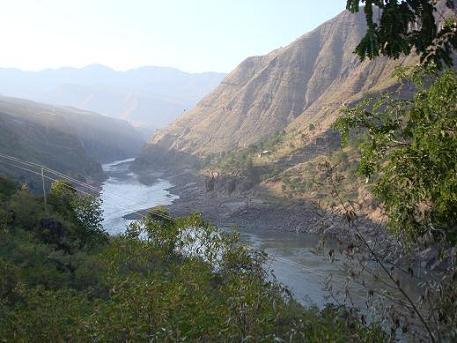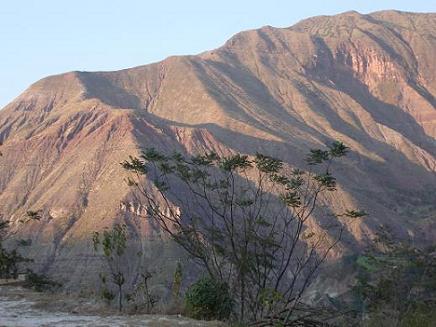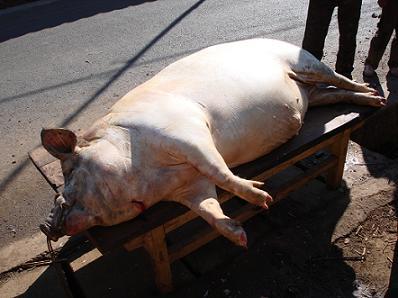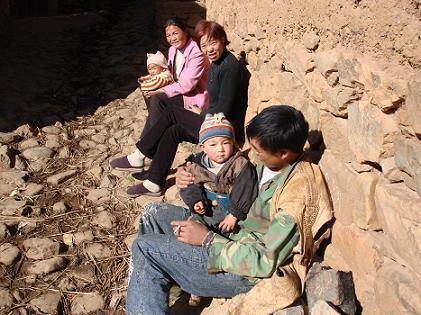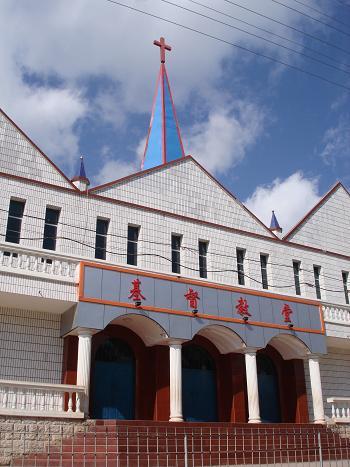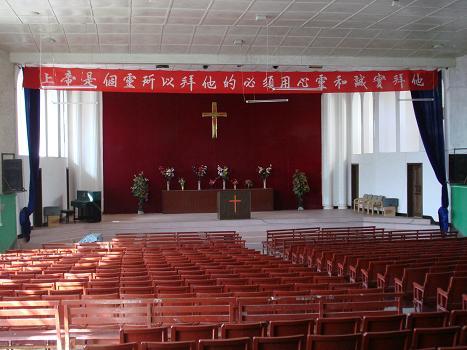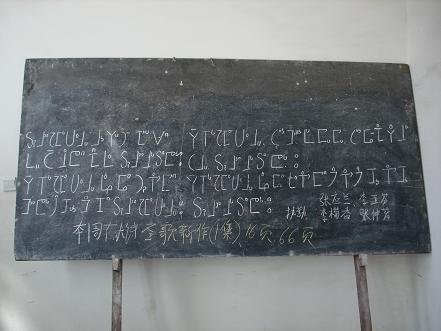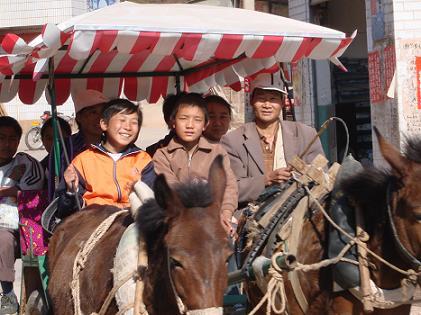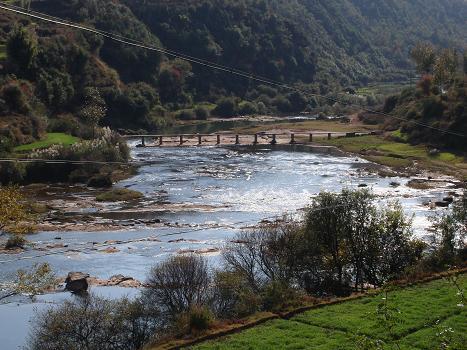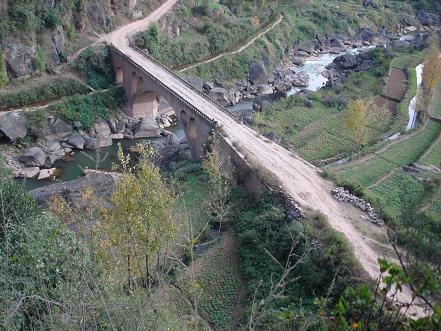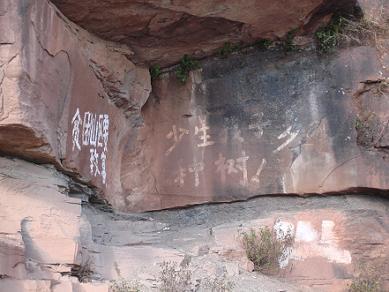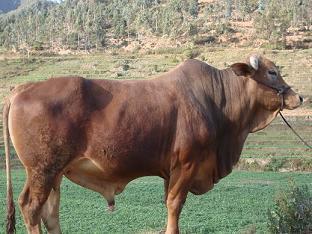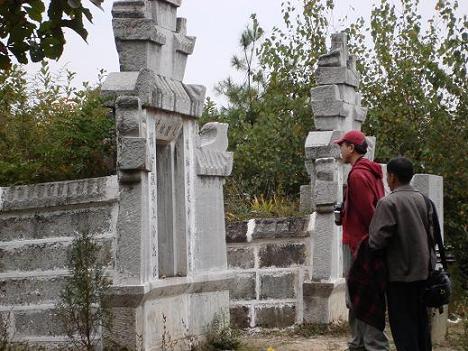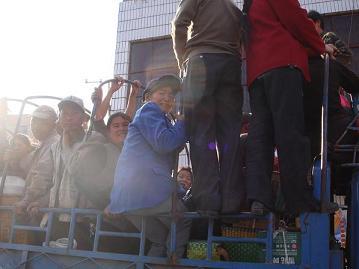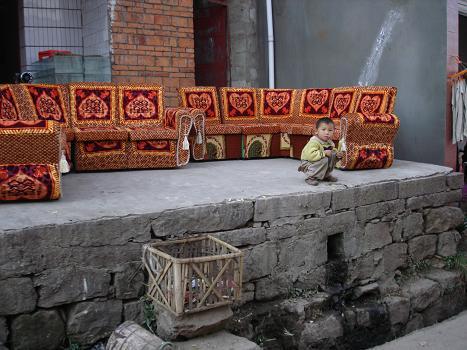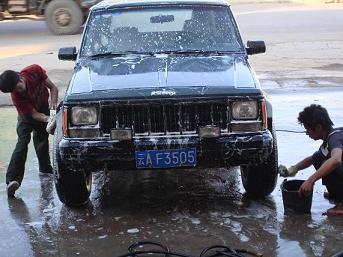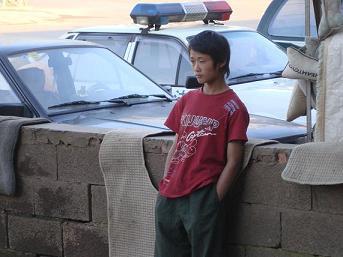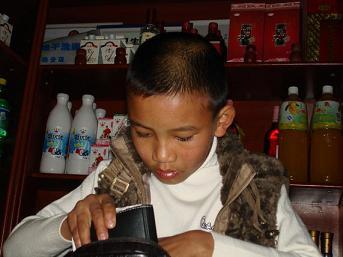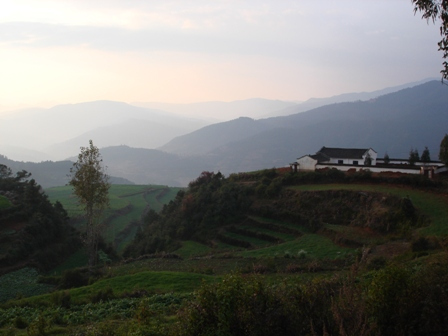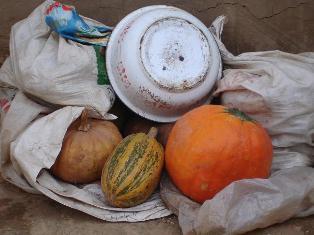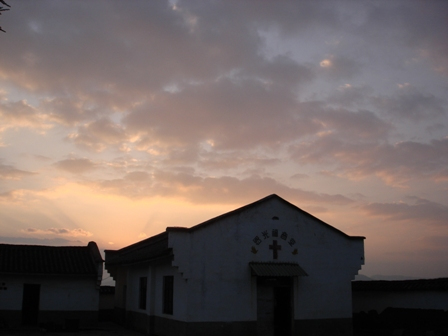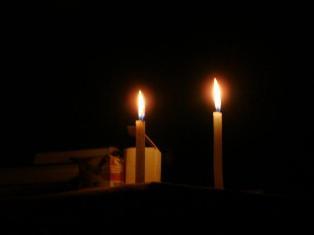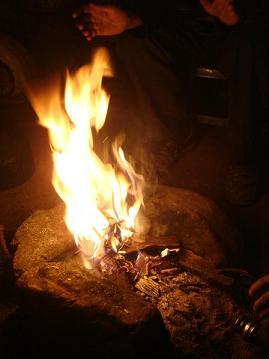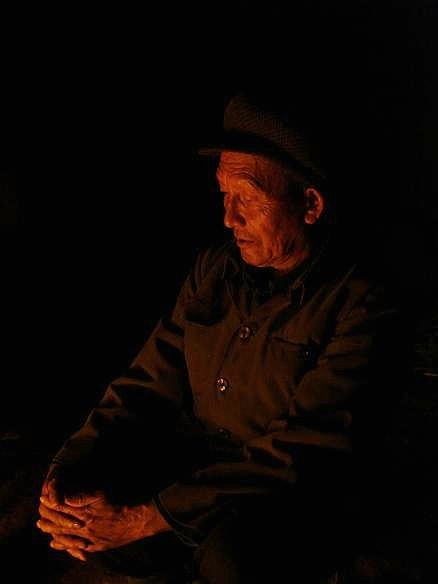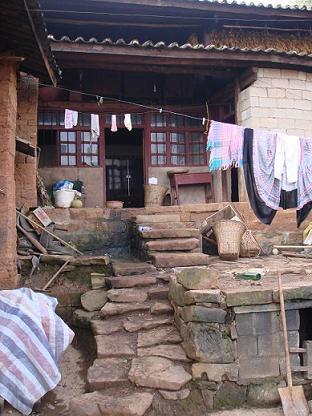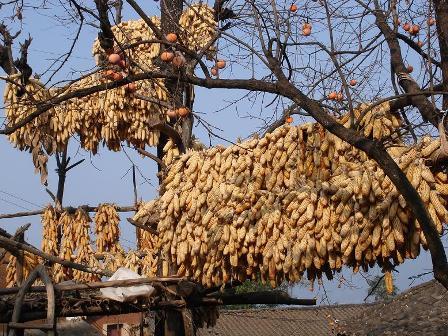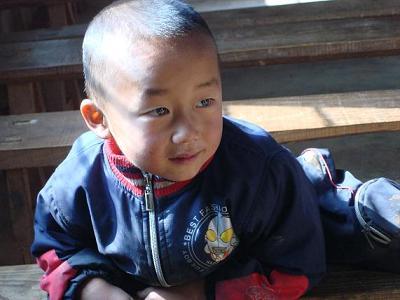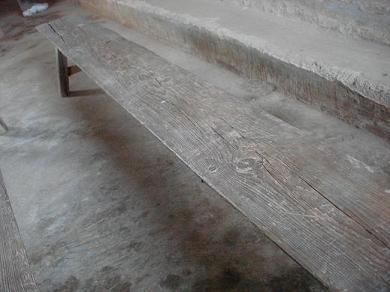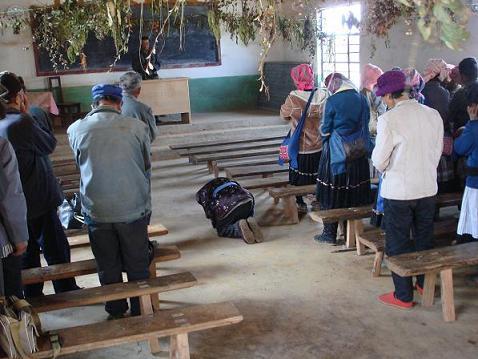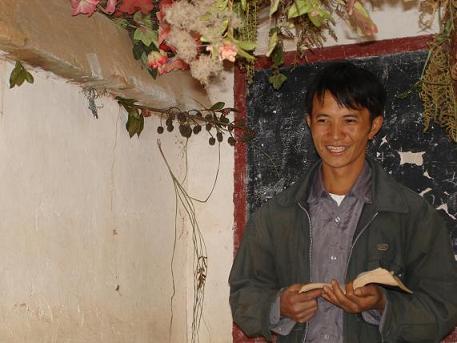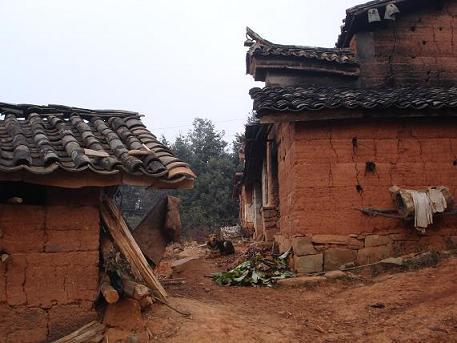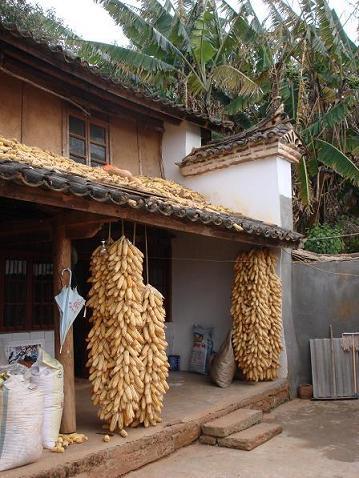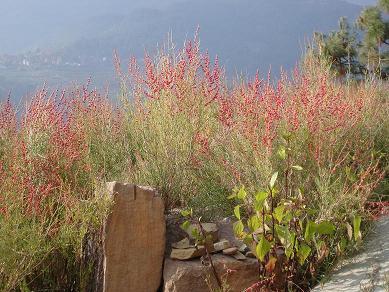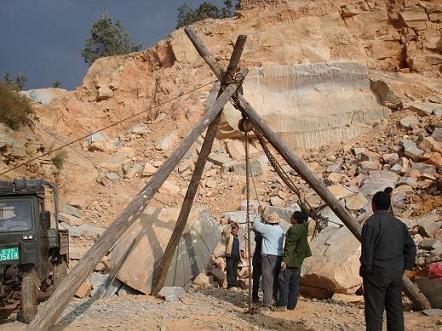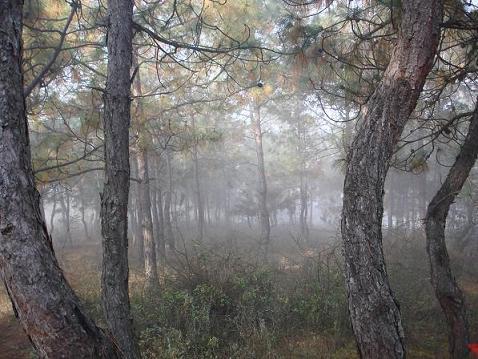12-6-2006. Back on the journey again. The Jinsha River was set as the destination of this trip because I had read about it many times in Pastor Samuel Pollard*s memoir. Plus, the first hand experience had become necessary as the river would also appear in the script I was writing at the time.
It was quite difficult to decide on the route but we finally settled with one that had to go through Luquan County. As soon as the car drove out the dusty and dirty suburb of Kunming City, we were embraced by the fresh air and blue sky - a long overdue break lay ahead of us!
The Land of Peach Blossom or the Shangri-La without snow?
12-7-2006. The first stop of the day was Sayingpan after spending the night at Luquan County. The town*s main street was filled with people and horse-drawn carriages. The local livestock trade market was about to open, we had learnt.
The Yi minority takes high percentage of the local population. Many of them were seen wearing this type of jeckets made of entire piece of sheepskin.
Corn is the staple food in the area. As the winter sun was still warm and bright, the proud display of autumn harvest was a fixed part of the local scenery.
I made a special trip to the livestock trade market, which was not something you could often see in the cities.
A romantic moment caught through my lense.
Next to the livestock trade market, I found this chapel inside a big courtyard. Many young men and women were scattered around, some of them wore Christian pastor*s outfit. I had soon found out that this was a government-run Christian pastor training camp. Interesting enough, I was gearing up and ready to interview some trainees and shoot some classes. The result was unexpected 每 we were told that we would not be welcome here and no contacts between the trainees and us were allowed! Even worse, we had to drive away from the premise right away under a female teacher*s watchful eyes, and she was the one who put up an all smile face to me moments ago! I soon figured out what went wrong: I had told them that I was from US and doing a Christian-related research 每 that fact alone obviously touched someone*s nerve and the rest of it was history. You know why, don*t you?
As soon as we drove out of Sayingpan, the beautiful scenery cleared up my mind and lots of laughter were left along the way.
We came to another small township which serves as a mid-point of our journey. We decided to take a break for the rest of day and settled into this motel. The house was built along the mountain cliff and newly renovated, providing economical yet comfortable accommodations.
﹛
We took a walk around the area. One of the farmer*s house reminded me of the first movement of Beethoven*s ※Pastoral§.
The harvest of beautiful mountain flowers.
The boy who came back from a nearby trade market was shy away from my camera.
Break on the mountain top.
These boys on the town street were happy to pose for my camera.
A puppy that belongs to the motel*s owner. His innocent eyes were killing me.
12-8-2006. After an early breakfast, we were driving down along the mountain path, heading to our destination located on a canyon. The road condition was getting worse as the mountains grew more rugged and steepy in the region.
A farmer*s houshold in one of the mountain villages we were passing through.
Jinjiang, a big multi-ethnic village that was the last stop before we hit the river.
We had to travel on foot for about 5 miles before finally arriving at Jinsha River. My imagination flied high as I was busy at shooting the footage of the grand view 〞 Had Pastor Samuel Pollard or other Western missionaries ever walked upon this narrow meandering foot path?
I had to have a photo taken here as I felt great standing on one of the newly-built float bridges or rather, at a joint section of history and modern time!
Another look of the old and new, past and present.
The fabulous color of the mountainous details looked like an enlarged traditional Chinese miniascape.
After many failed attempts, we eventually located a couple of boat trackers by the river shore. Understanding them and their job was part of the plan, since they were mentioned frequently in the works of early missionaries and I was playing with the idea to write them into my film script.
﹛
Little Liu, our local-hired travel guide, was a high school graduate and stayed in the village for the time being. He served a big help as my conversation with the boat trackers went on.
To get the first hand experience, I jumped on the boat with Liu for a trip crossing the river from Yunnan to Sichuan Province, which took about 10 minutes at this season of ebb-tide.
Another beautiful river view from the boat.
﹛
Taking the boat was still the most convenient way of local transportation if you don*t want to walk 2 extra hours to cross the bridge. Many people living on both sides would go back and forth many times a day to do business. The photo shows the boat trackers* phone numbers written on the wall, and the big Chinese characters read POLITENESS.
The final look of Jinsha River from the distance before we drove back into the mountains.
The sunset time inside the mountains.
12-9-2006. We unexpectedly drove into a crime scene soon after we had embarked on our trip back to Kunming. Always considering myself a born detective, I couldn*t help but stopping the car and shooting some evidence 〞 the victim was laid on a table and ready to be skinned and cut open.
Turning a blind eye to the bloody scene, the local people enjoyed their leisure time by sitting in the warm sunshine and playing with the kids.
Back to Sayingpan, I took sometime to visit to the Christian church on the main street, which serves as a home for mostly Yi minority church-goers from nearby counties and villages.
The well-furbished church with a grand style was rebuilt from the foundation of an old movie theater. The attending rate is now much higher than the old days since most Chinese had stopped going to the movies in this provincial town. The sentence on the banner reads: ※God is spirit so we must worship him with whole spirit and faithfulness.§
The presbyter of Yi descendence introduced the church history, pointing out that this very church was also founded by a Western missonary. He also showed me around the building. Inside the office upstairs, I saw this blackboard with a hymn lyrics written in Yi characters.
Back to the mundane life, I ran into a group of after-school boys poising on a horse-drawn carriage.
I had to stop the car and took a few shots here #
One more!
Well, reality sets in here. The slogan painted on the rock reads: §If the mountain region wants to get rid of poverty, the first choice would be cutting down the birth rate and planting more trees!§
We had a little traffic jam here 〞 a gigantic bull blocked our way and refused to move forward.
A scene that would definitely make metropolitan traffic police cough blood!
A surreal moment!
A car wash at Luquan county 〞 the child labor scene touched me though it was a common thing in the region.
This boy*s life was quite different 〞 the photo of a restaurant owner*s son.
﹛

